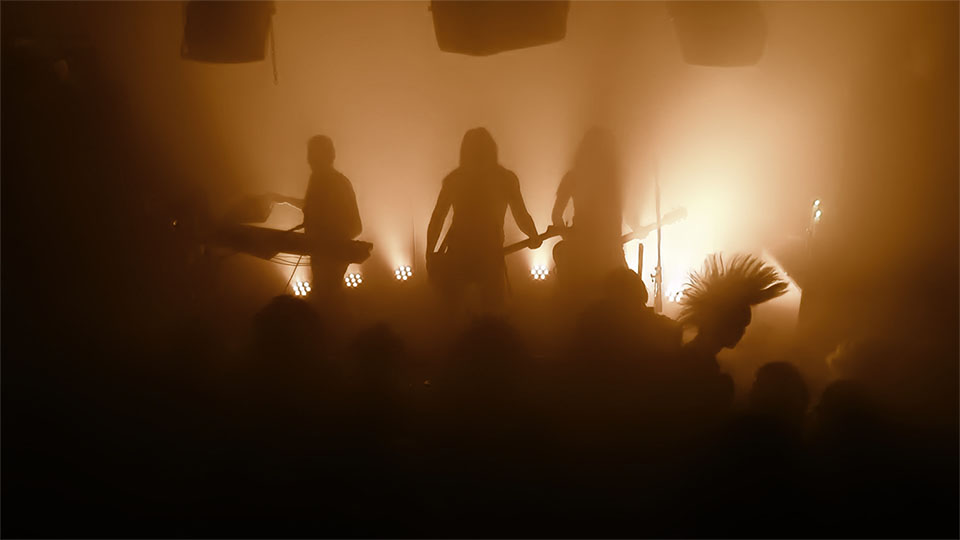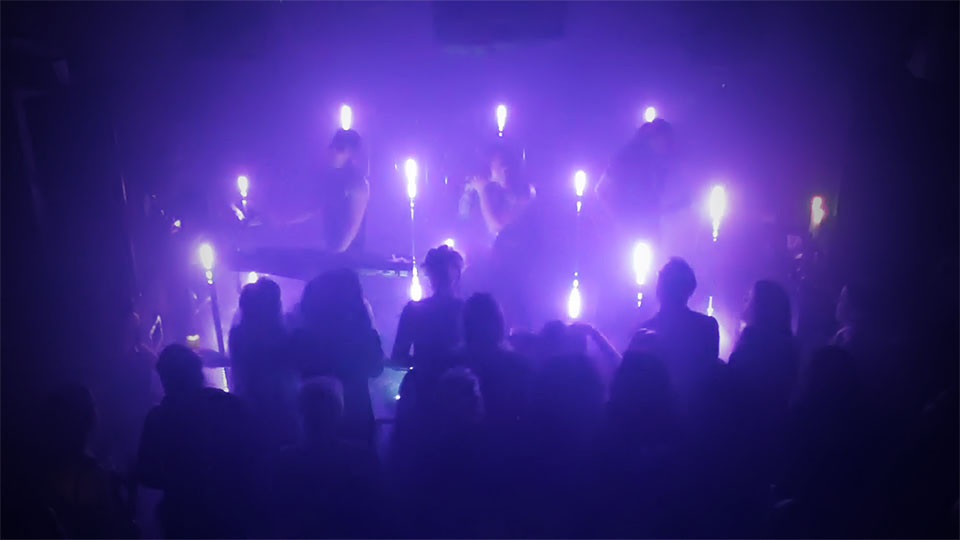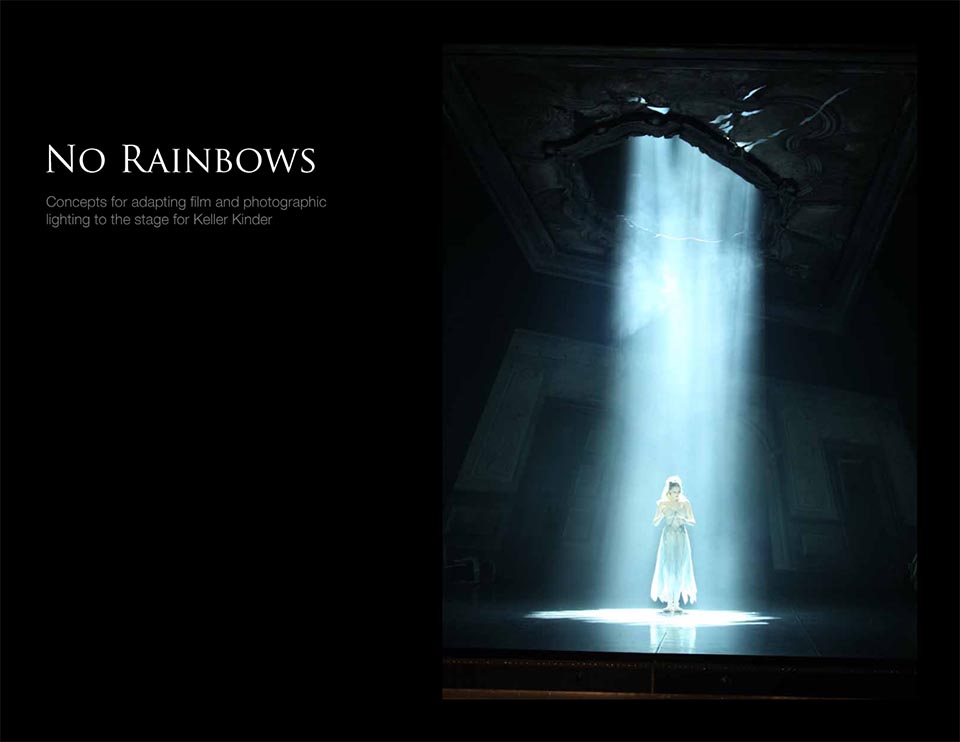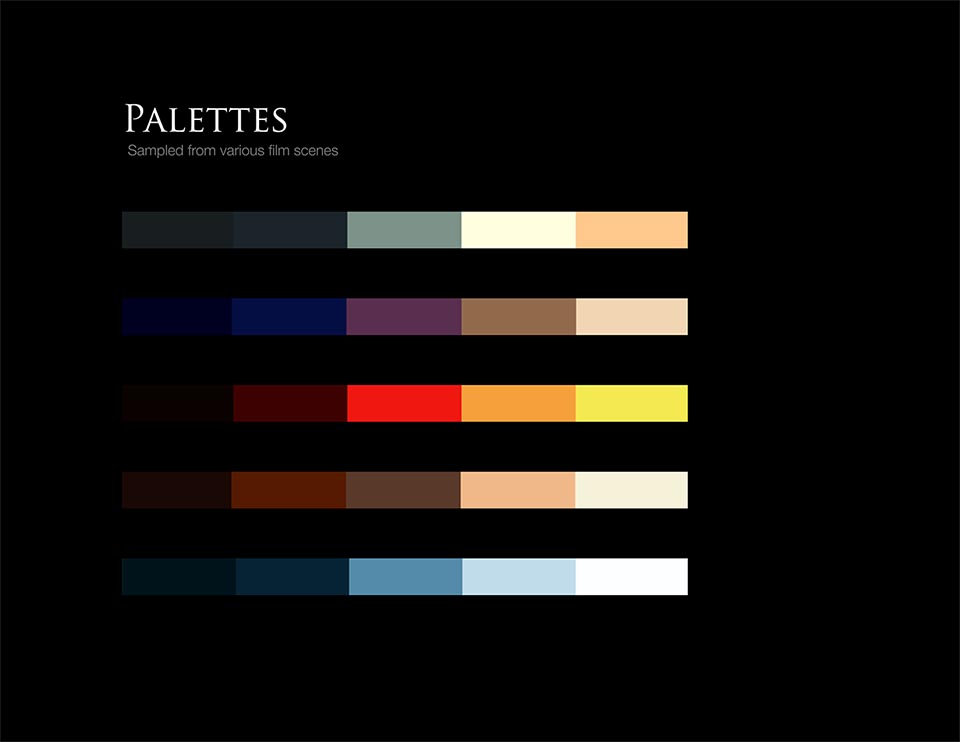KELLER KINDER

Into the Fog
Keller Kinder is a Gothic-industrial band based out of wellington, New Zealand. I met the lead singer/bass player through weta, and hooked up with the band to build and design lights.
Mystery. Darkness. Elegance. Power. Dramatic back light, Dangerous strobes, and fog, fog, and more fog! Those were the marching orders.
A rare opportunity where the band's focus was not on being seen, but felt. The lights needed to create an environment that amplified the emotions of the songs and exemplified those qualities.
The concept I came up with was a sort of forest of lights which would envelope the performers. The whole project involved building the fixtures, custom software, electrical engineering, and of course lighting design.
The Pitch
I did quite a bit of research for this one. Most of it was into the band's history, and their target audience. We briefly discussed the kind of feelings they wanted to convey and look they were going for. In general they were very open to anything, but certain things were off the list because they either didn't work well enough, or were associated with other genres and themes (such as lasers being too rave like).
The overall direction was inspired by film in terms of the drama and colors, but by industrial music in terms of motion and forms. I used mood boards and some sketches to convey ideas. We had a few meetings, and the band was invited over to see the finished rig and make any last minute suggestions. Really great guys to work with.
Mood board
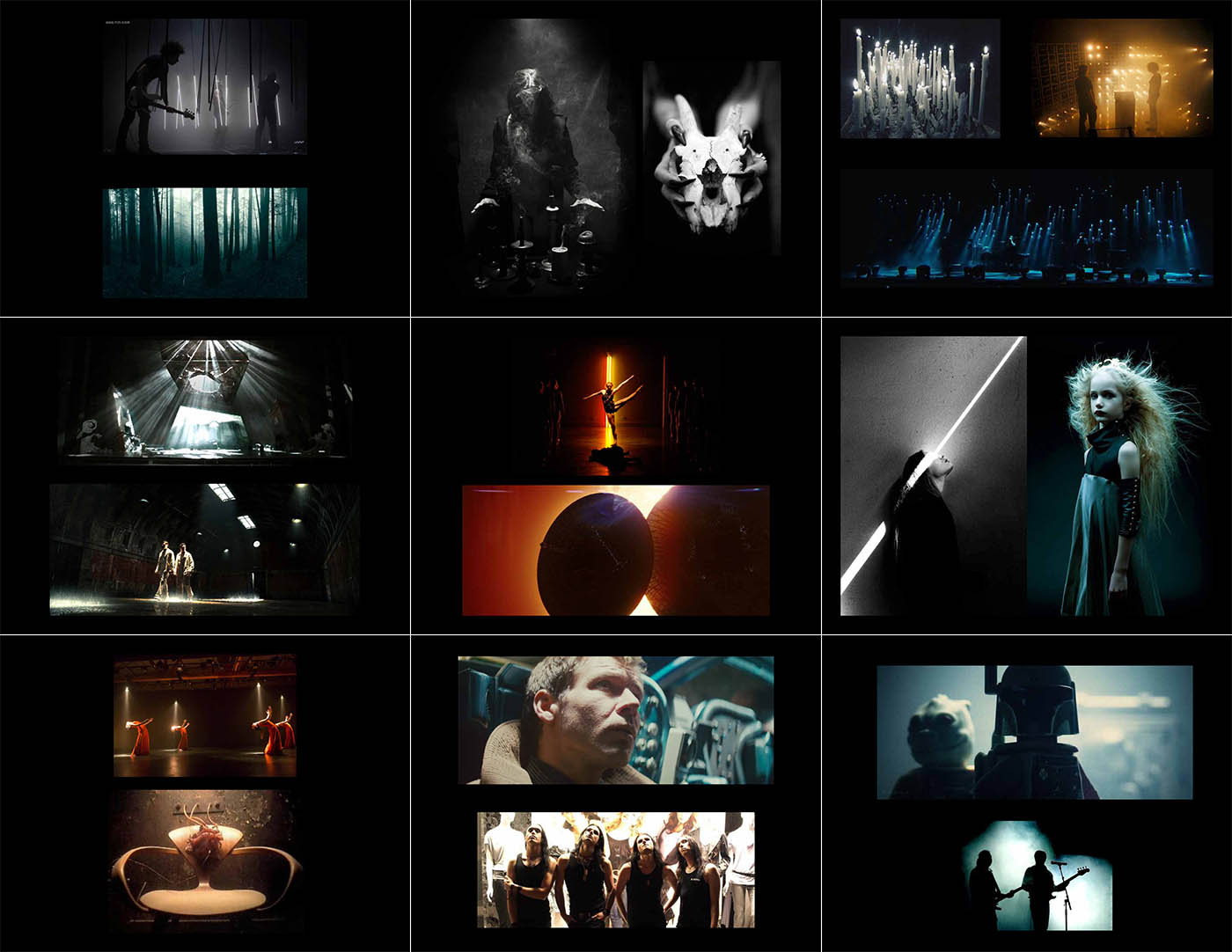
Early tests

Hardware
The rig consisted of 10 RGB LED poles, 18 RGBW par cans, one Atomic, and a custom built midi controller for performing the whole thing live like a giant pipe-organ.
I made the LED poles from parts sourced online, and assembled them at home. The bass is MDF with a 1.2m pine stick in the middle. This provided more then enough weight to keep the center of gravity low and prevent tipping.
Electronics for running the LED strips came from joshua 1 systems and I wrote custom software to convert video into streaming ACN dmx data. The LED poles were connected with normal cat6 cable, and the RGBW parcans ran with normal DMX cables.
Programming
All the video content was made in Adobe After Effects, and based on a carefully mapped 100² pixel layout. This included many video loops, static masks, and song-specific clips which would sync to the music when played at the right time. Very little actual video footage was used. It was nearly all cg content with a much more motion-graphics look.
The clips were played back using Resolume controlled via a piano keyboard and other interfaces. Clip and clip-groups were assigned to keys and buttons. Sliders and knobs assigned to effects, intensity, transition speed, and other functions.
Making the content was by far the most challenging part, as what you saw on the computer screen never really matched what you saw on the rig. I had to create a custom color profile for the LEDs, but even then, most of the colors had to be tweaked in Resolume. The nice thing about using video was that effects and timings could be made very complex. Another downside is programming was very slow.
Early Tests



